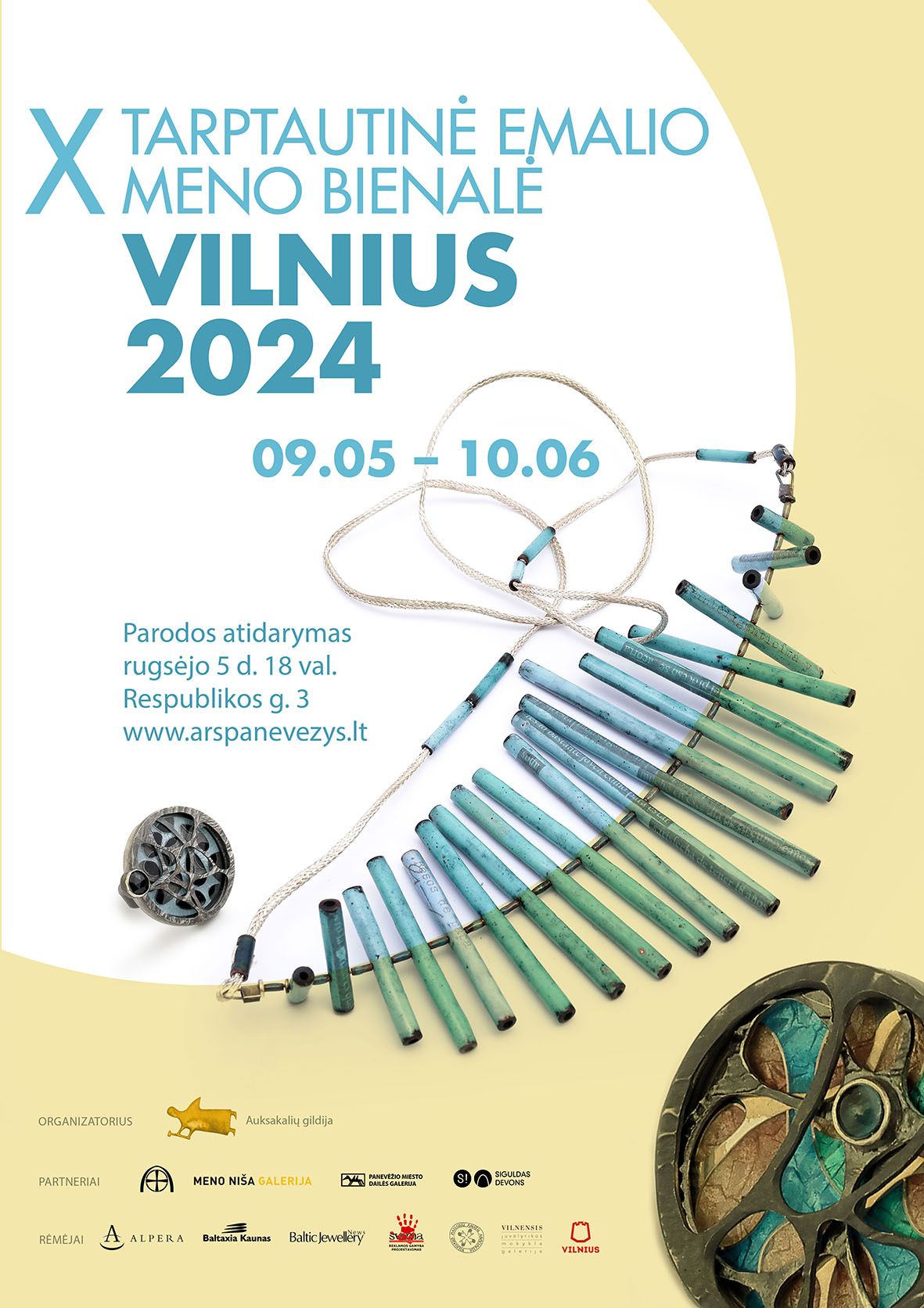2024 09 05 – 10 06
Opening September 5, 6 p.m.
Exhibited at Ceramic Art Pavilion (Respublikos str. 3, Panevėžys)
Personal masterpieces
Enamel, a technique older than Christianity, has not disappeared in the modern world: artists with patience and knowledge of the craft still persevere to create works that combine technical expertise and improvisational skills. This is why it is so rare to see enamel works: this technique requires knowledge, time, and artistic inclination. But Vilnius is particularly privileged in this respect: here, enamel is showcased every two years at the International Biennial of Enamel Art, the largest professional event dedicated to this jewelry art form. Starting in 2005, this year the Vilnius Biennial is proudly taking place for the tenth time at the Meno Niša Gallery. The theme of the Biennial – Masterpiece – reflects the anniversary. The curator and artist Marytė Dominaitė invited the participants of the biennial to review their works, selecting a work that, due to one or another feature, deserves this obligatory designation. The work that has made the biggest impression, required the most effort, led to new discoveries, or achieved a harmony never seen before. That‘s why the anniversary enamel biennial is both retrospective and topical: here you can see works from the past decades, as well as works that have just been created – because sometimes the best work is the most recent one. 38 artists from Latvia, France, Sakartvelo, Estonia, Venezuela, Japan, and Lithuania embark on an enamel adventure in search of a masterpiece. Enamel is laid on a grid that suddenly becomes the basis for openwork compositions; it drips off a wire or a plane to form a volumetric object; it coats panels that claim to be watercolor rather than enamel, giving them durability, and it is found in everyday objects or in forms that are more reminiscent of sculptural installations. It is translucent and opaque, watercolor and pastotic, sculptural and volumetric. With enamel, the artists are able to convey anxiety and joy, peace and wonder, cultural allusions, and the impression of movement.
It is clear that the artists maintain a connection to a tradition that dates back to the first millennium BC. However, it is also clear that this technique favors contemporary artists; the main tendency of the 10th Biennial of Enamel Art is toward the painterly and instinctive. Enamel can cover a traditional jewelry object, a bracelet, a brooch or a ring, a piece of sculpture more akin to a small sculpture, or a plaque equivalent to a painting. It is no coincidence that plaques occupy an important place in the exhibition, making us think about the links between painting and metal art. However, the enamel breaks away from the plane and spreads out into space, forming a mobile or sculptural object. This possibility of playing in space seems to have been of particular interest to the artists participating in the biennial. This impression of instability is reinforced by the exhibition, where the jewelry objects become scores – as if demanding to be not only seen but also played. For the tenth biennial, enamel once again speaks in lines and colors, shapes and volumes, revealing a panorama of more than 70 personal masterpieces.
Jurgita Ludavičienė


